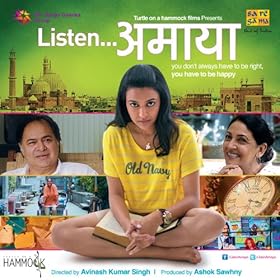India went 2-0 up on March 5 in the latest (2013) bout between India and Australia for the Border-Gavaskar trophy. It was only the 4th day of the game and India had wrapped up Australia for a paltry 131 batting second, and they were not even able to set a target for India to chase. It was an innings defeat for Australia and the biggest defeat India have handed them in some decades. Or very well, the first of such magnitude.
To put this into perspective, let's back up a few years. It all began in 1998 when the masters of batsmen against spin, Navjot Singh Sidhu and Sachin Tendulkar shredded the wizard of spin, Shane Warne to beat Australia at home by 2-1. That was followed by a 3-0 drubbing Down Under, during the eclipse on Indian cricket of Sachin's captaincy. After that, followed a fiery captain for India, and fitting heir for Steve Waugh's Australia in Ricky Ponting. The two together charged up the rivalry to it's present height. India secured a thrilling, coming-from-behind, gladiator-esque home series victory in 2001 and gave Australia a run for their money in 2004. Australia fought back on their next tour of India to take the series 2-1, claiming their 'final frontier'. It has nothing been a see-saw, a constant tussle between the two cricket giants, no matter where they played, home or away. But something changed along the way.
However, in all this, the one thing that remained constant were the 'home' conditions of India, and the invincible aura of the Indian team at home. Except for Australia and South Africa, two of consistently competitive teams in world cricket, no one team has been able to beat India. India's home record of God mode test cricket extended quite a few years, emphasizing the mastery of home conditions by India. At the same time, the utter ineptitude of India in abroad conditions, even with ever weakening sides like West Indies, Indian cricket always stooped to the level of the other team. This begs the question: What is home field advantage? Why can't the same players who post mighty performances at one place be as productive elsewhere?
Coming back to the 2013 Australia in India series. When India went up 2-0 in a dramatically one-sided fashion, with India's spin bowling casting wizardry on all-pro Australia, I was talking to a few people as if India had already clinched the series
4-0, when 2-0 was not even enough to say India had won the series. The trend was obvious. India was plying only 2 seamers so far, the spinners were grabbing wickets in the dozens, and M S Dhoni/BCCI were requesting more spinner friendly surfaces. What was left to watch? We didn't an oracle to tell us it would be a whitewash. Sure, Australia were tamed on the 5th day of the third test, on historically seam friendly Mohali pitch, but the last test in Delhi was wrapped on 3rd day itself with the key being.....spinners. R Ashwin is the Man of the Series.
Just a few series ago, India buckled down to two back to back whitewashes in pace-friendly Australia. Gautam Gambhir famously challenged Australia to produce the same performance on spin-friendly Indian pitches. Just a series before that, India capitulated to England at their home on pitches that were reportedly asked to be made 'greener' meaning to favor seamers, which Indian batsmen, with all their mega talent predictably failed to overcome. The 2004 'final frontier' Australian victory was also marred by pitch complaints. Down 1-0 in 2 games, India needed a draw at the worst to prevent the scepter of home series defeat. Instead, Australia won the third test on Nagpur's fast pitch and bagged the series.
Indian fans/BCCI cried foul over the laying of an 'infavorable' pitch for India. The last test match in the series, was nothing more than a face saving exercise for India, when the Mumbai pitch was promptly created to favor the spinners. Surprise, surprise! Indian spinners (even Murali Kartik) grabbed wickets by the dozens to help India retain some dignity (in terms of series record of 2-1). But a pitch so rigged, prompted
Ricky Ponting to lodge a complaint with ICC in this regard, which went nowhere.
This article won't be complete, if the
disastrous Indian tour of New Zealand in 2002/3 isn't mentioned, where the pitches seemed to only work for New Zealand. What do we make from this all?
It just feels like cricket is turning into a sport with a flavor for each country.Australia is unbeatable at home on it's bouncy pitches. India loses 4-0 against England in England. India beat the mighty Australia 4-0 at home but lose them by the same margin when visiting? In terms of putting it in an analogy, it is akin to asking a marathon runner win a 100m dash and conversely, asking Usain Bolt to win the marathon.
Home field advantage should be factors out of the sport's control. Like crowd, weather. Not umpires (Australia, the worst offender) and pitches (India, the worst).Instead of sizing up to the task of grooming players for certain conditions, and selecting the players whose style and ability are a better fit for the destination, world teams and cricket boards resort to doing a one-up against each other by providing home team friendly only pitches.I wont be surprised if one day, we will see all spinners in the bowling attack since day 1 of a test match played in India. We already see no spinners being played by Australia in Australia. T20 cricket is catching up fast with Test cricket, and the very short nature of it ensures both sides get fairly the same kind of pitch. The short length of the game also ensures that both teams don't have a natural upper hand when playing the longer version of the game. There must be a standard on how to lay a pitch, internationally. A set of rules of the kind of pitches provided in a series, no matter which country hosts it.
In this day and age of Test cricket erosion, if test giants like Australia and India, succumb to the lure of 'home field' tactics and cannot overcome the same as visitors, then what is left to watch in a game of Test cricket. Like the analogy, I used before in my
post on match fixing, the point of watching a rehearsed play or recorded suspense movie or a sports game is to witness excellence of talent while keeping the outcome a suspense. Similarly, if we all knew what is going to happen, when country A visits country B for a Test series, if the home country is almost always assured of a victory, then test cricket would be nothing but making a farce out of itself.































